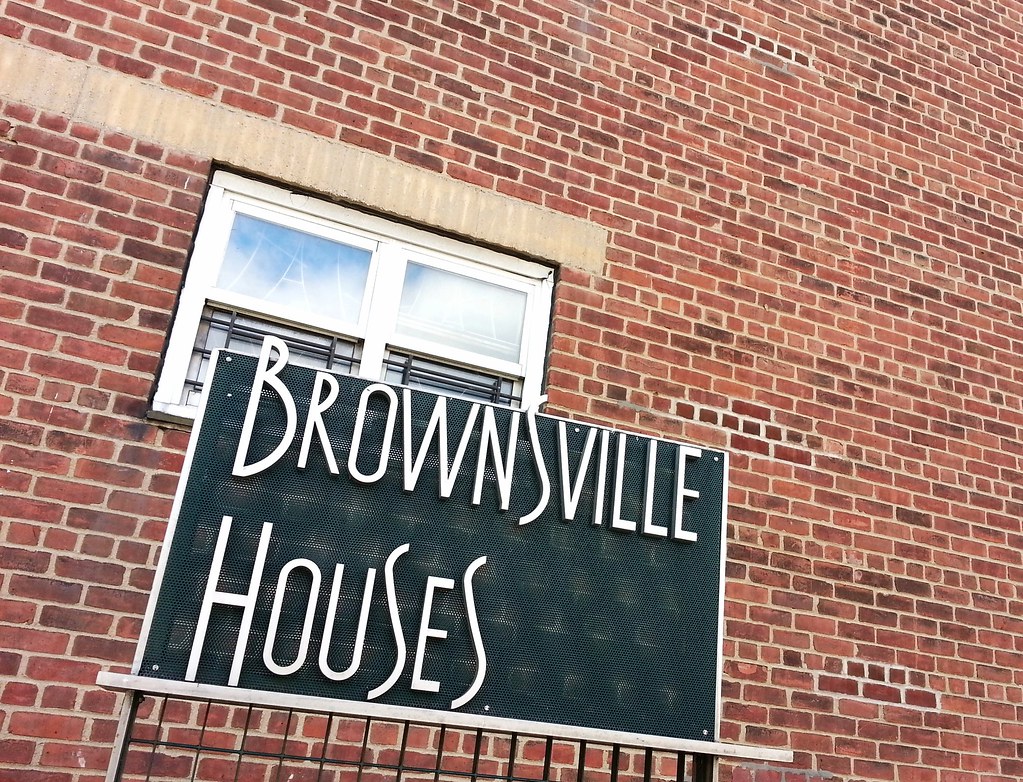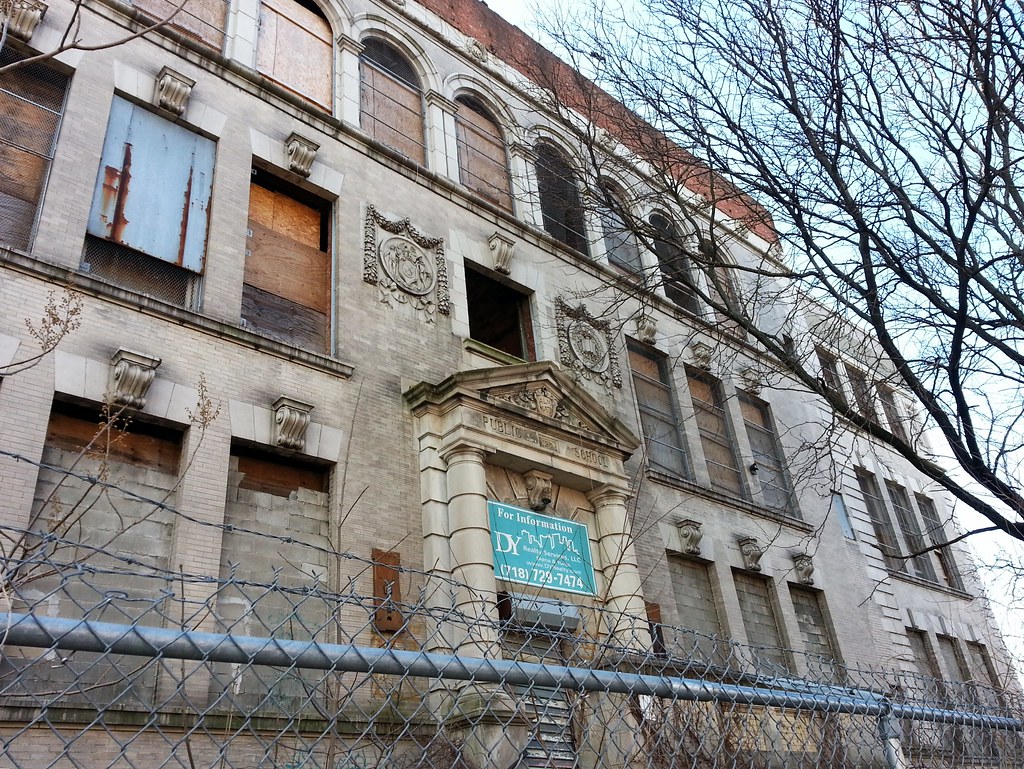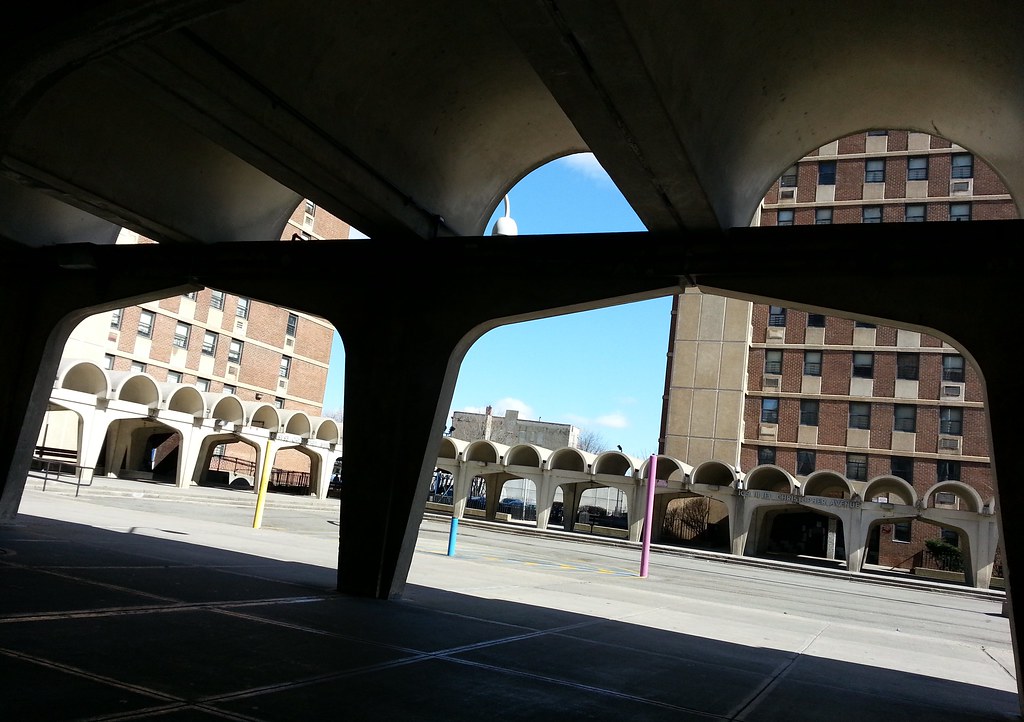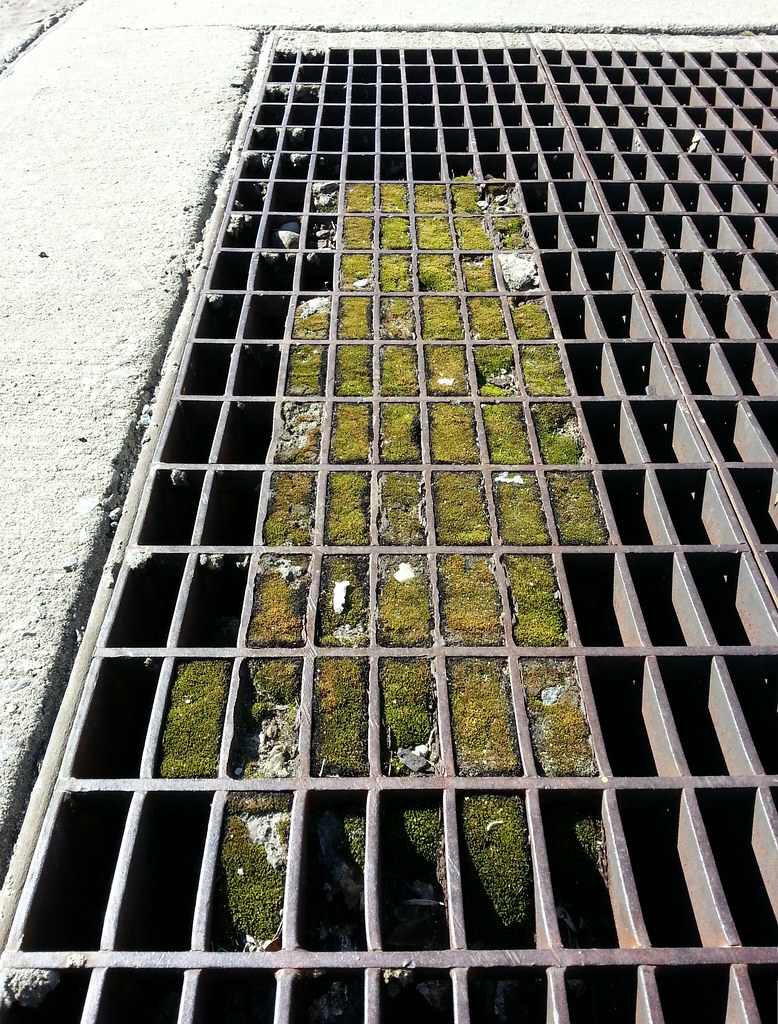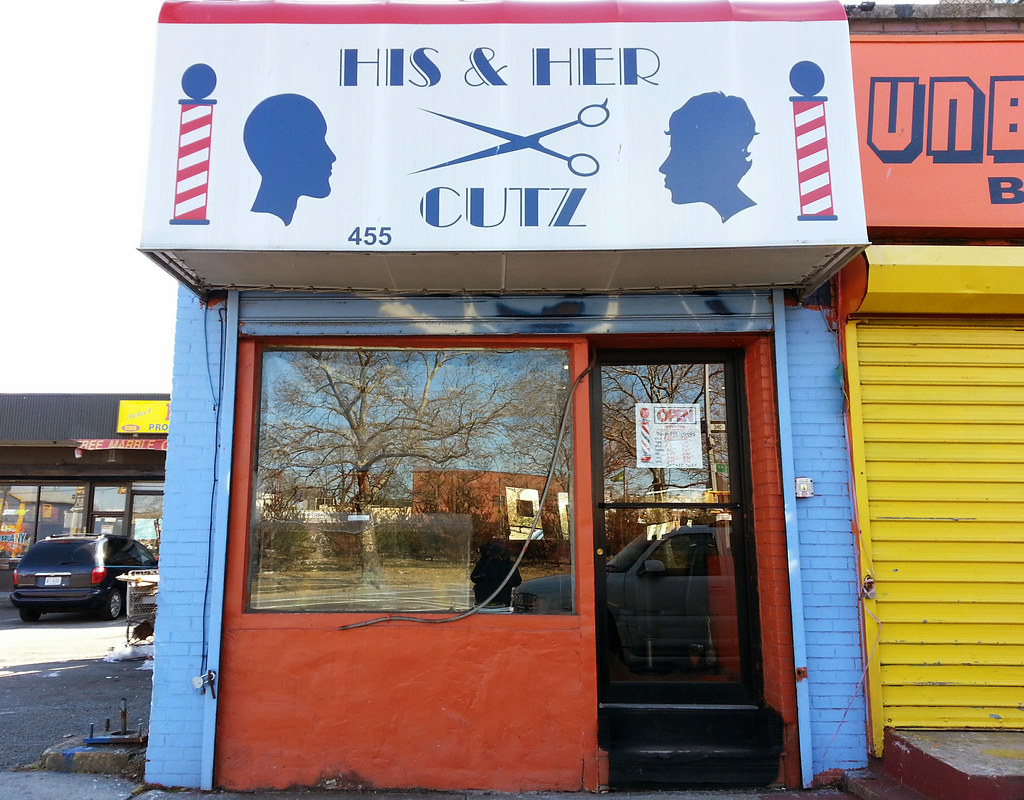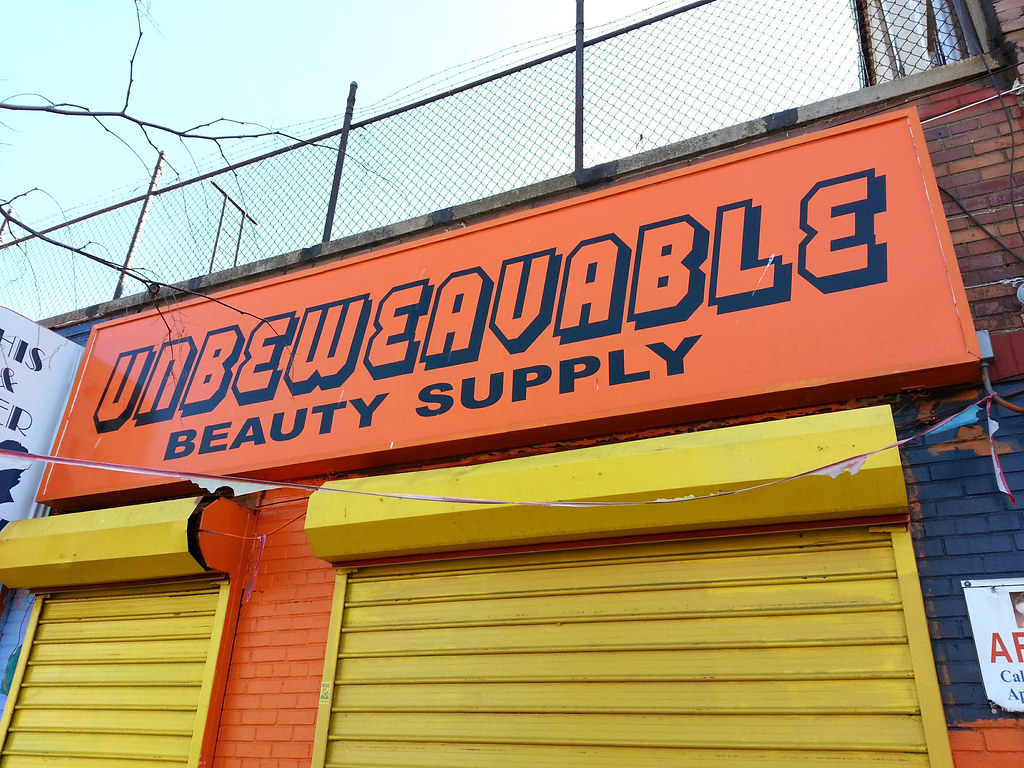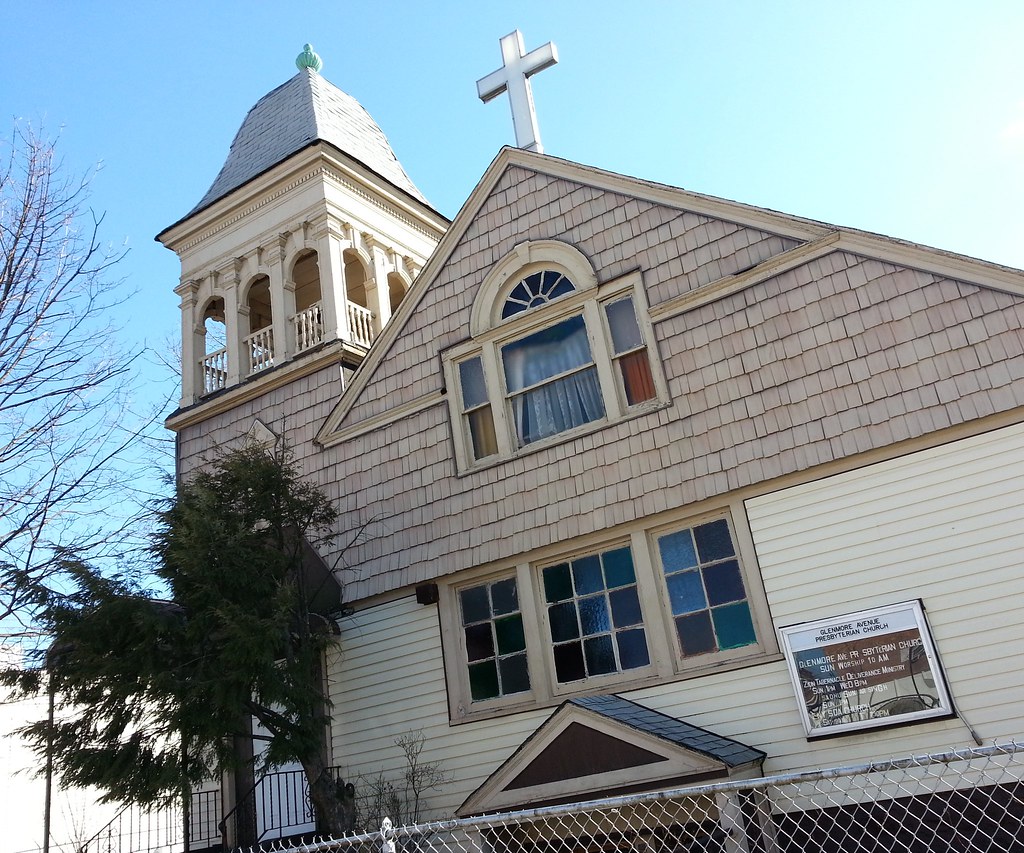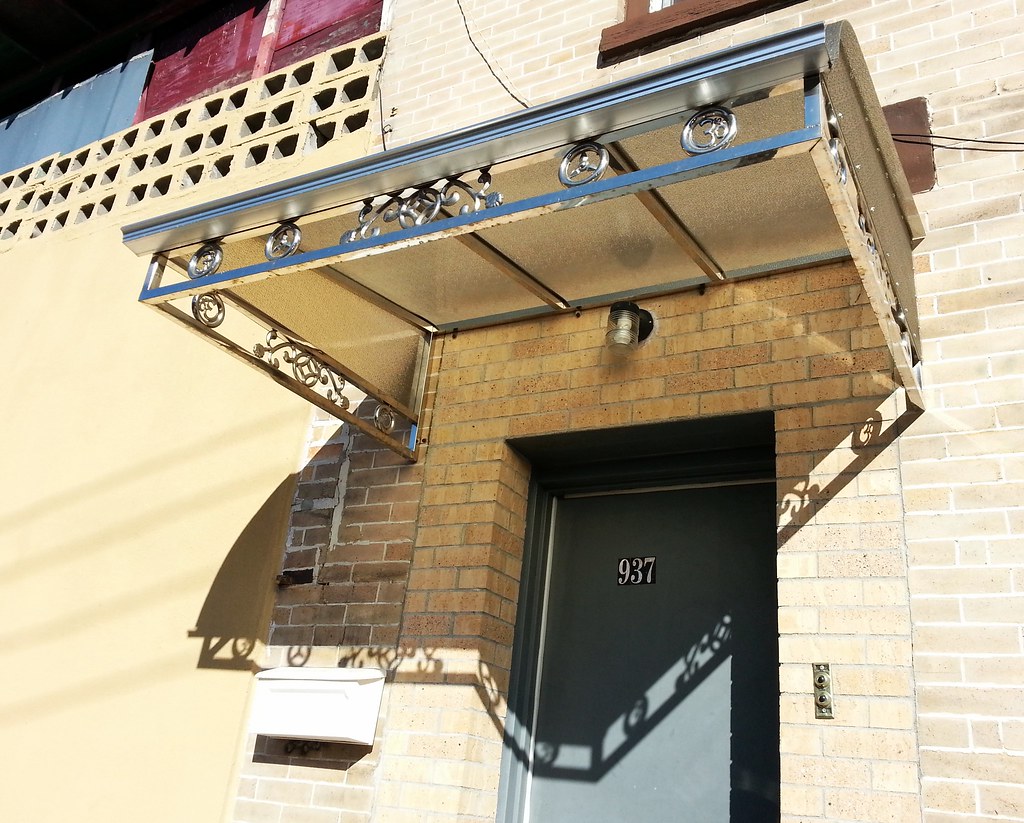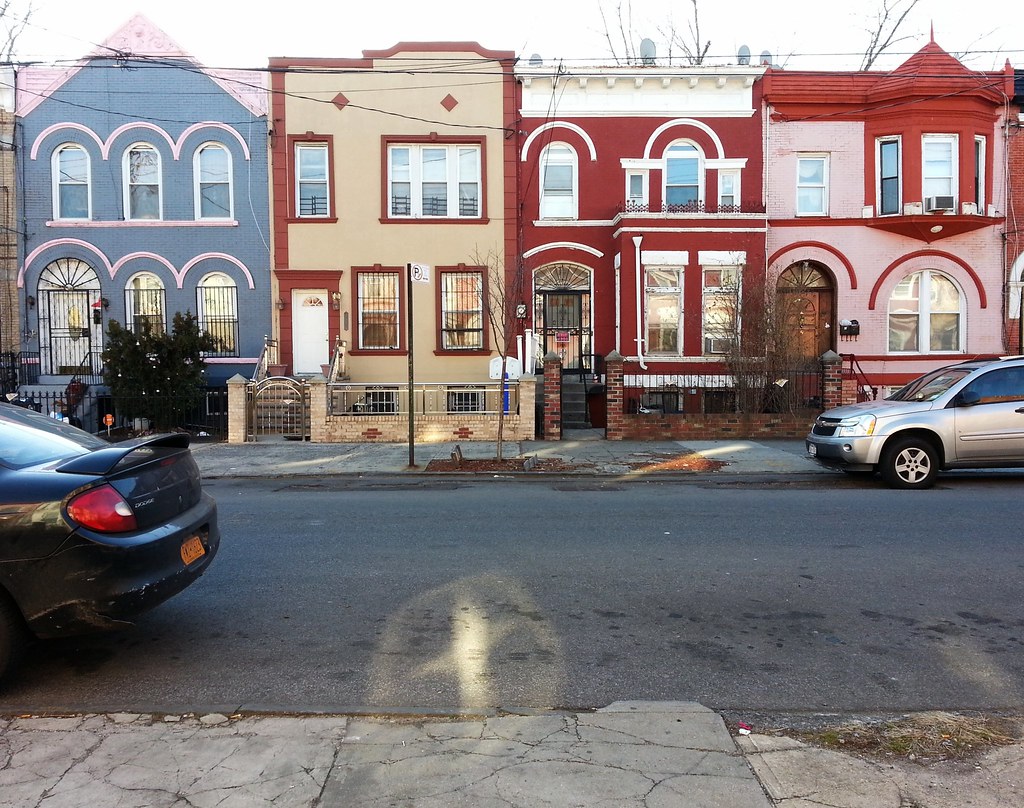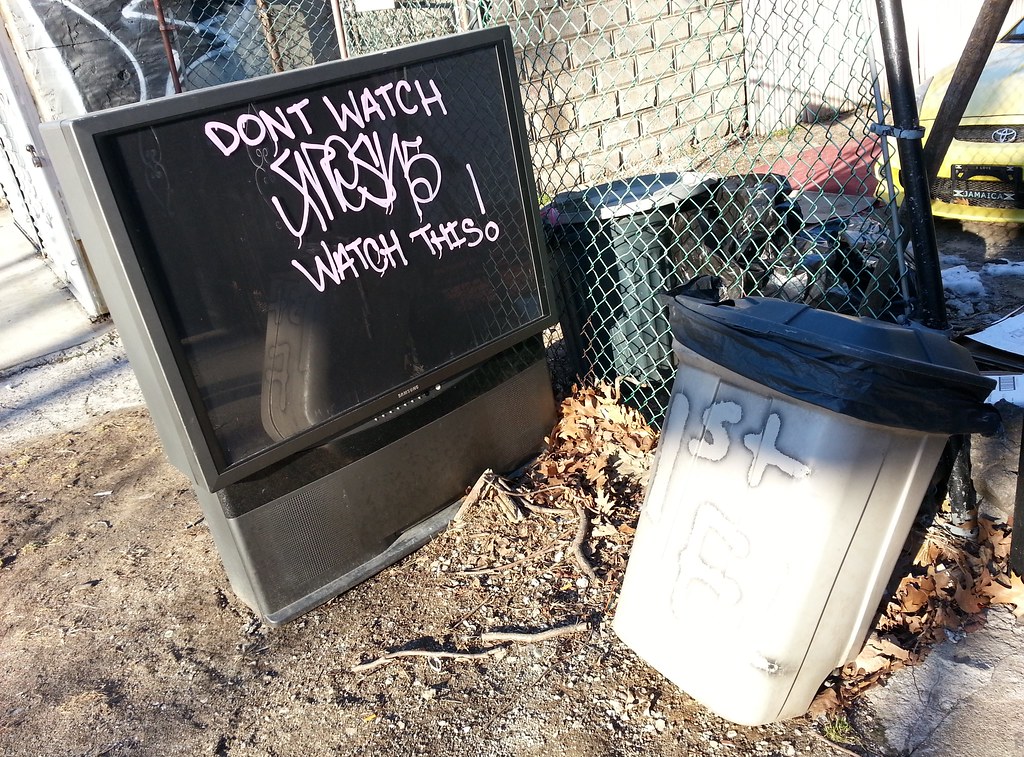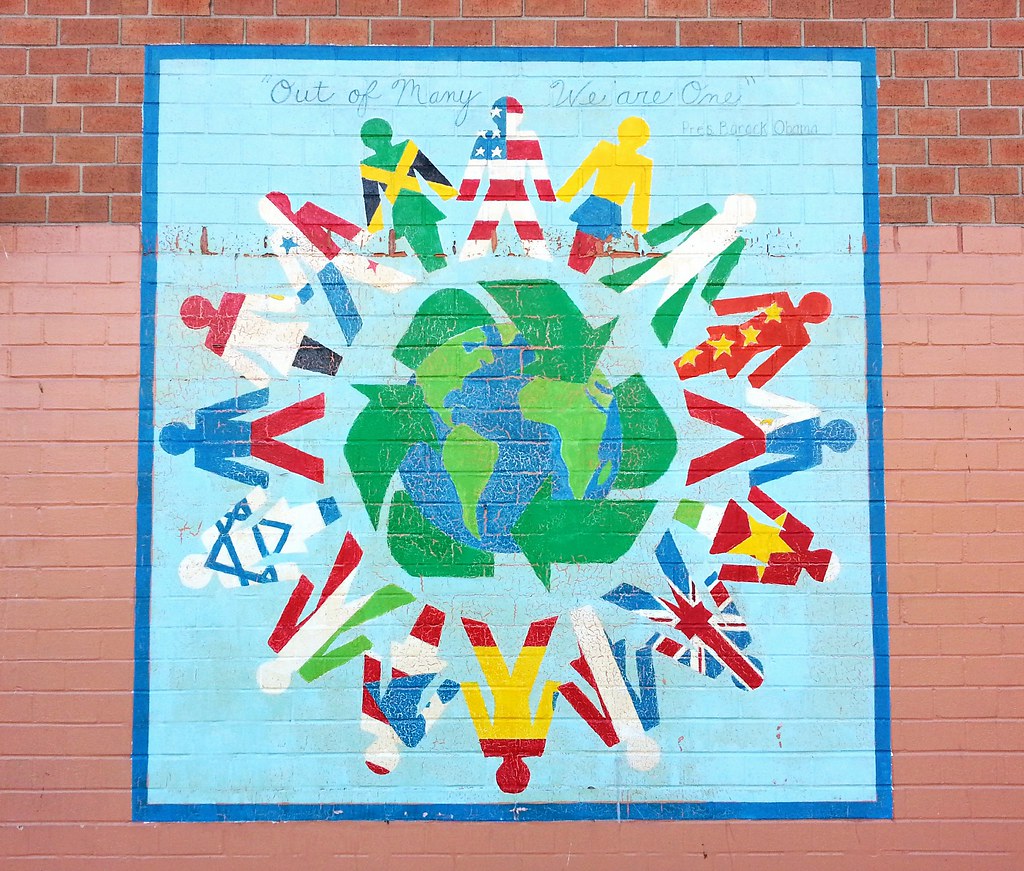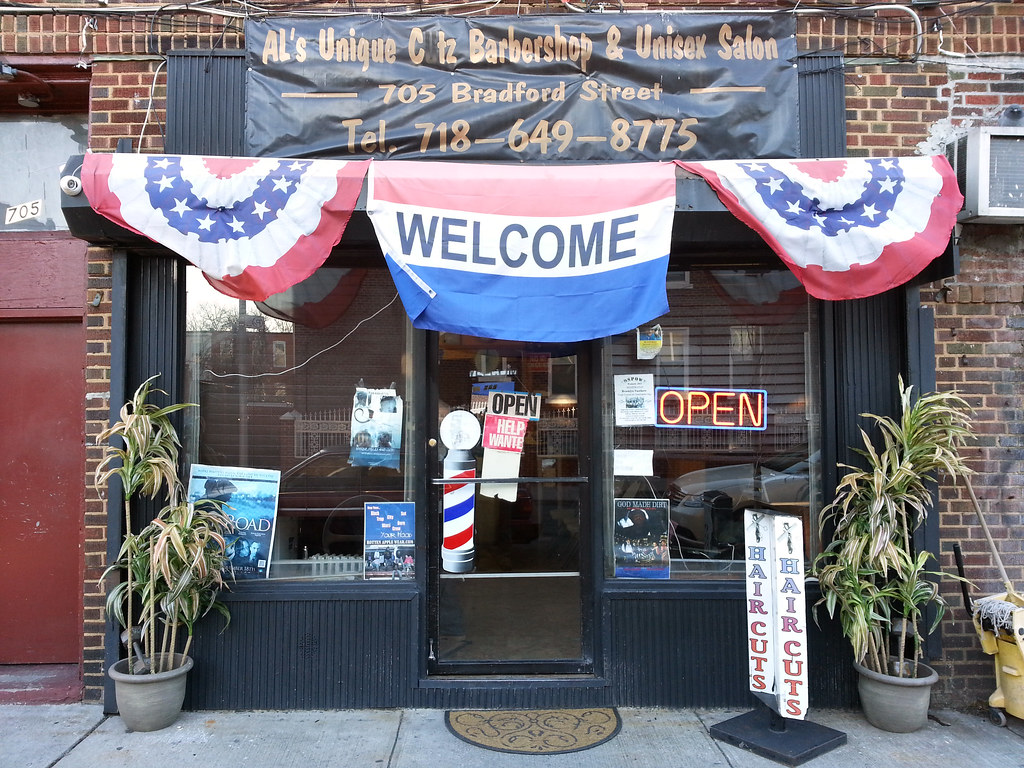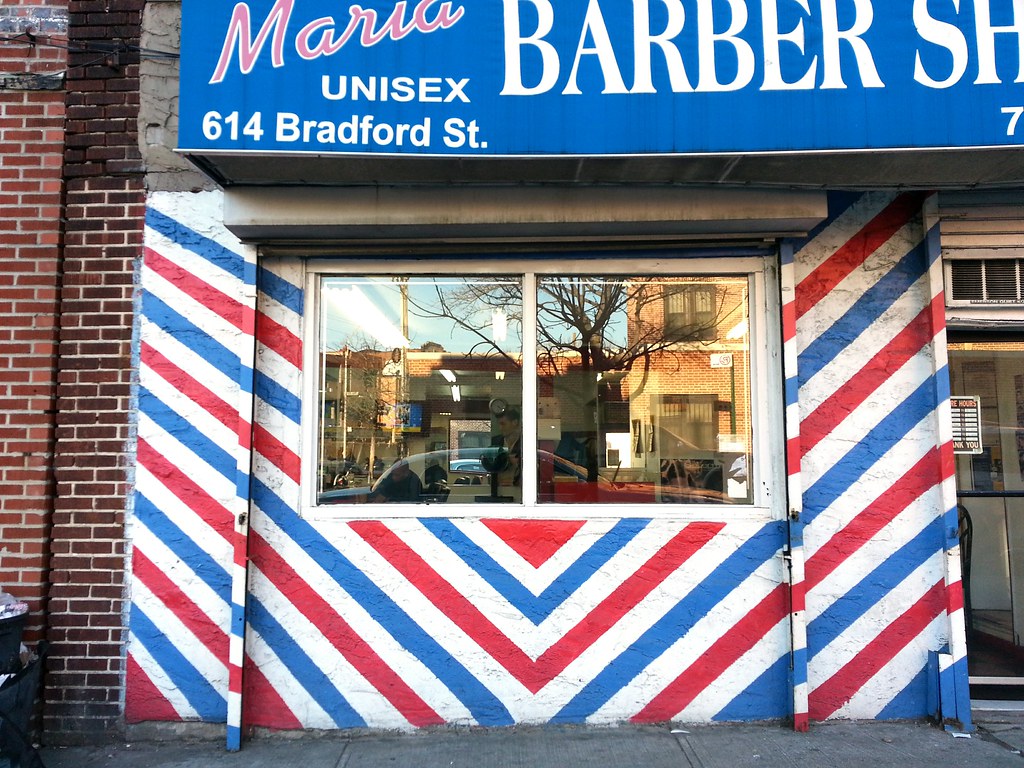
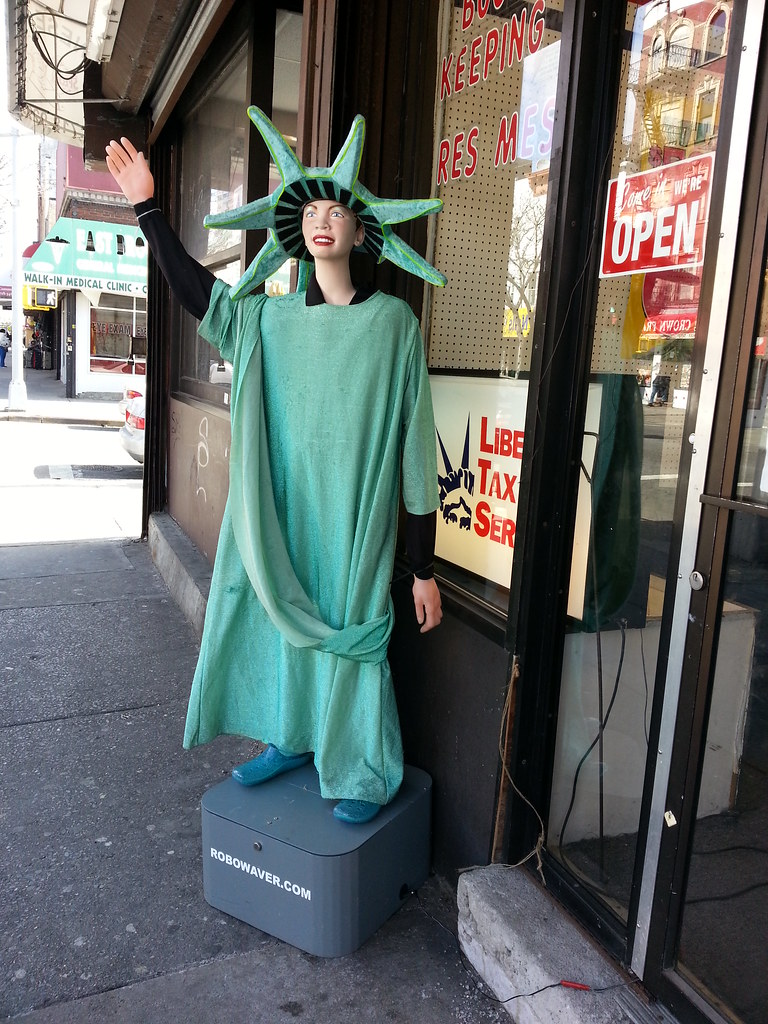
From the website:
Works 12 hours a day!
NO rest breaks
NO bathroom breaks
NO complaining!
No hygiene issues!
High ROI
Will NOT rust!
Always smiling!
Always on time!
Attractive and realistic
Skin tone options
Will not get arrested!
Enjoys extreme weather!
NO pay check required!

This building was once the Brownsville Branch of the State Bank, whose history at this location dates back at least as far as 1909, when the branch was listed in a newspaper ad for the bank that stated:
This Bank is a live business organization without any ornamental features but with practical and earnest workers everywhere in command. The small borrower is met, not with dignity and icicles, but with human sympathy on his own level, and this is emphatically a bank for all the people.In 1915, a 19-year-old former "moving picture actor" who was employed as a messenger here at the Brownsville Branch concocted an ultimately unsuccessful scheme to steal several hundred dollars he collected on his rounds one day. An NY Times report summed up the action with this headline and series of sub-headlines:
MESSENGER ADMITS HE FAKED A HOLDUP
-----------------------------
Writhing as in Pain, He Staggers Into Bank and Says Thugs Robbed Him of $782.
-----------------------------
HE ACTED HIS PART WELL
-----------------------------
Once a Movie Actor, He Irritated His Skin So He Looked as Though He Had Been Struck.

Created in the early 1980s as part of an effort to lure manufacturing jobs back to East New York and Brownsville
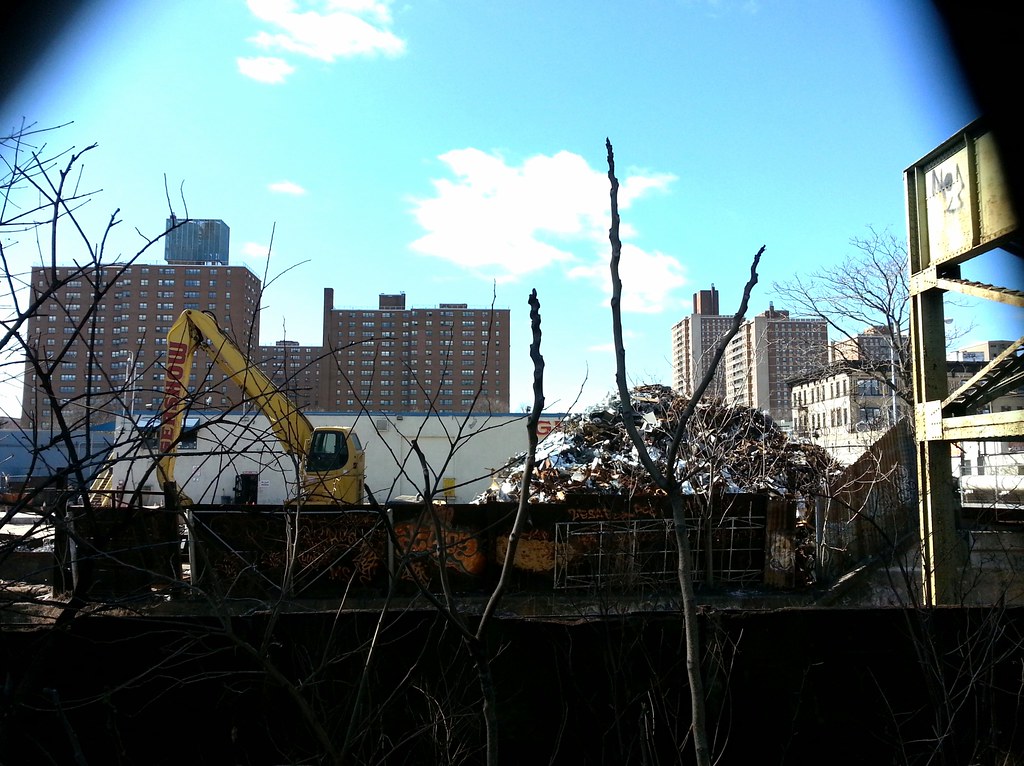
"It scarcely seems believable that eight seasons of major league baseball were played at this spot, and that kids would part with a hard earned dime to be allowed onto neighboring rooftops to watch the action."
— David Dyte, Brooklyn baseball historian
This scrap yard and some of its neighbors occupy the former site of Eastern Park, which, as we've learned, was the home of Brooklyn's National League baseball team for several mediocre seasons in the 1890s. It was supposedly during these years in Brownsville that the club acquired a nickname that has survived to this day, albeit in shortened form: the abundance of surface rail lines that a pedestrian would have to negotiate in the vicinity of the park (or in Brooklyn as a whole, depending on your source) prompted people to start referring to the team as the Trolley Dodgers.
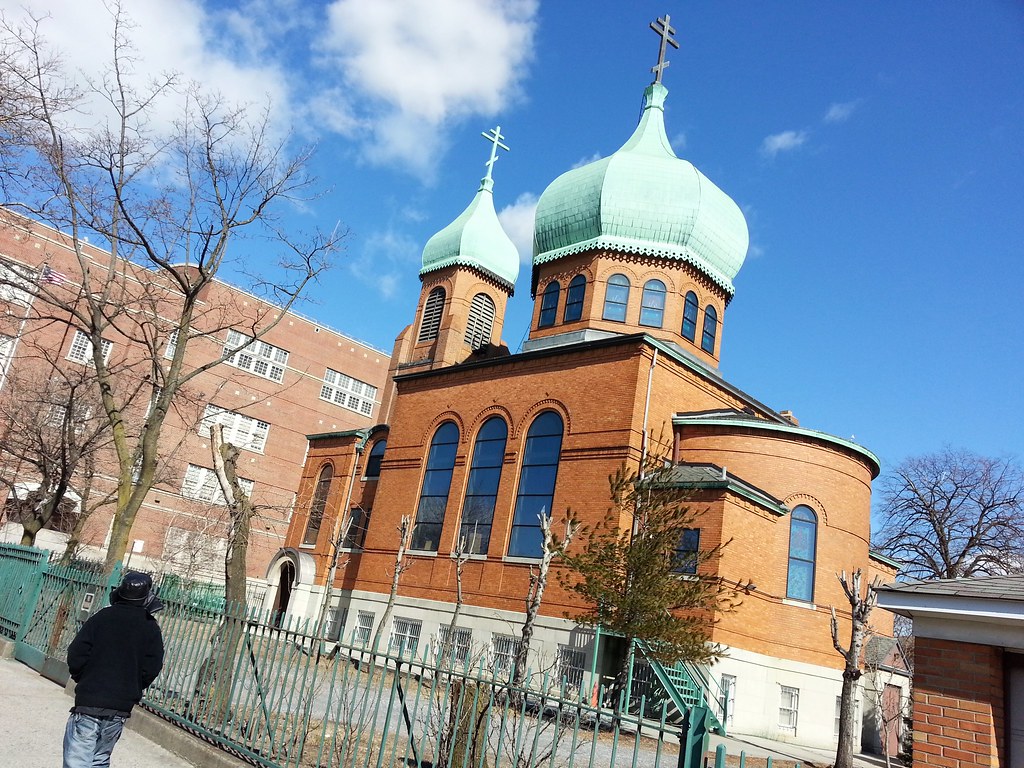
As the number of Russian immigrants living in East New York plummeted over the latter half of the 20th century, this church fell on hard times. It has experienced a revival in recent years, however, thanks to the tireless efforts of its current priest, Father Vladimir Alexeev.
The church was locked today, but once, a few years ago, I was lucky enough to pass by on a Sunday with a group of friends. We were just standing on the sidewalk, admiring the architecture, when someone popped out and invited us in. The interior of the church is stunning, bright and airy, flooded with natural light from the massive clear-glass windows. In accordance with Orthodox tradition, there are no pews — the worshipers stand, scattered about, for the duration of the service — which imbues the space with a boundaryless sense of openness and communality that I had never before experienced in a church. We only hung around for a few minutes, but it's one of my most vivid memories of New York so far.
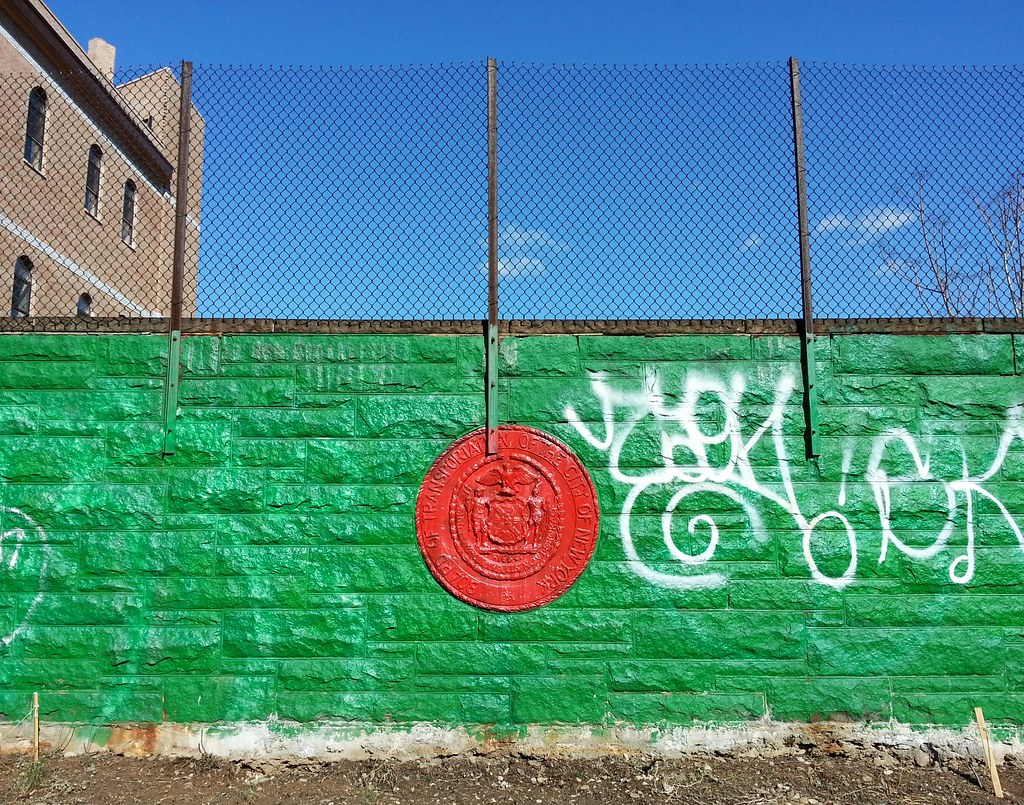
This Board of Transportation seal adorns a wall that stands atop the portal through which the A train passes as it rises from the subterranean depths of Brooklyn up onto the remains of the Fulton Street Elevated in Queens. The portion of the line connecting the tunnel to the older elevated structure opened in 1956; this seal must have been created shortly before the Board of Transportation was succeeded by the New York City Transit Authority in 1953.
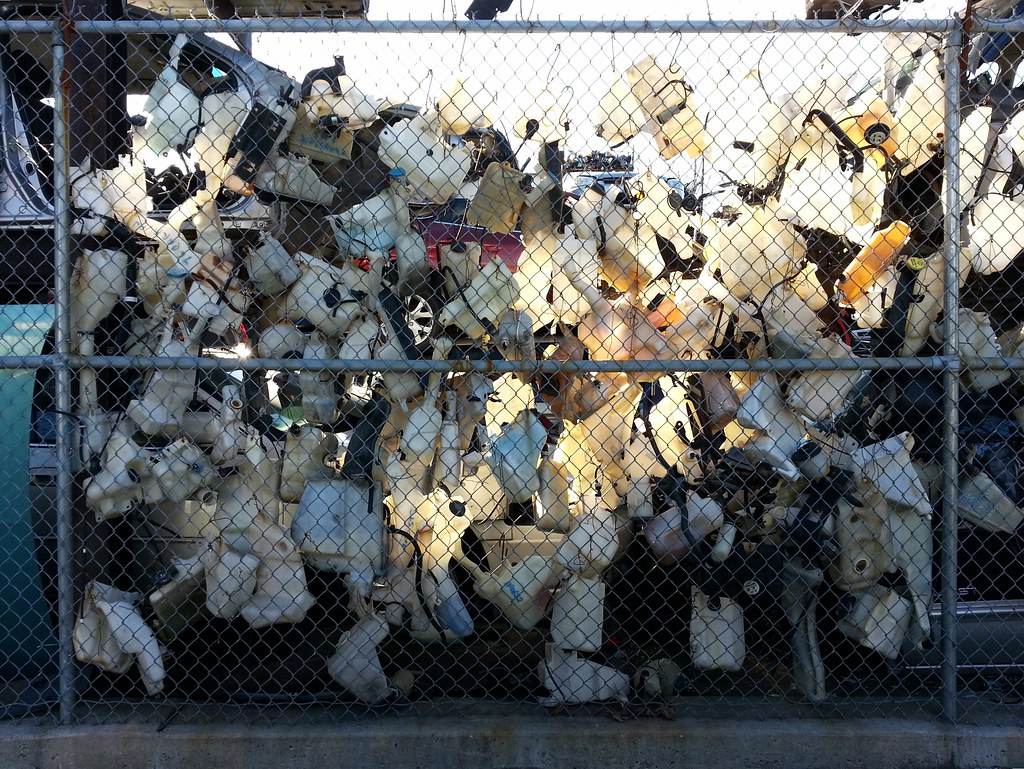
I didn't come anywhere close to capturing the crazy verve of this overladen fence surrounding an auto salvage yard. Check it out in Street View!
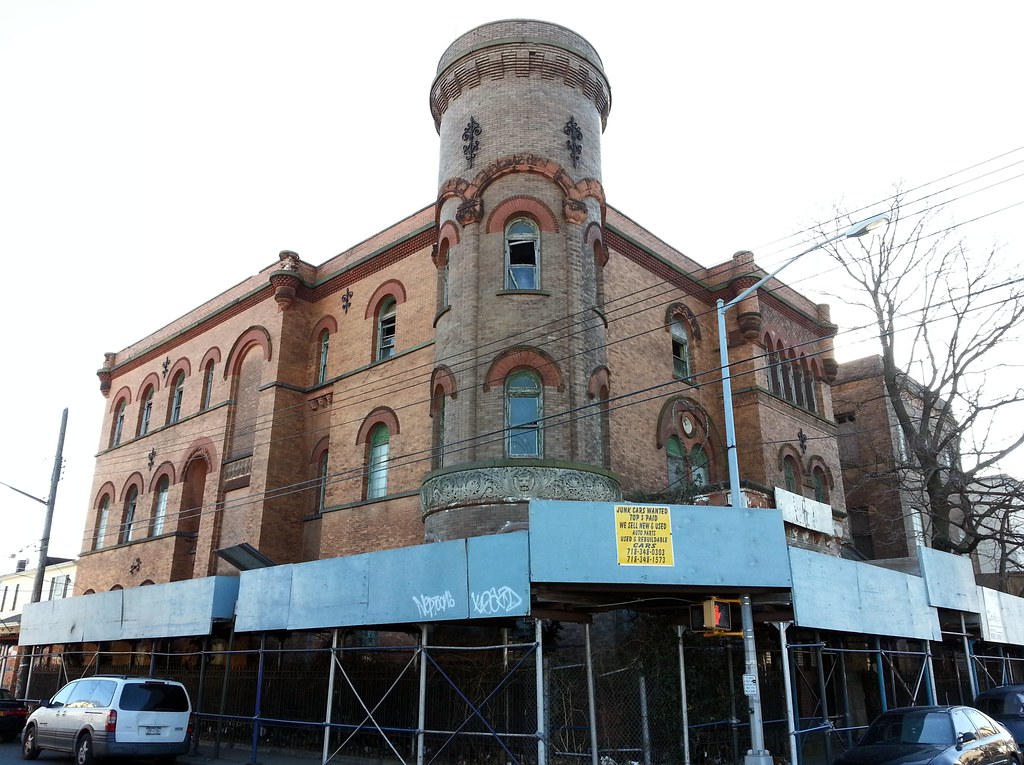
This turreted former police house opened in 1892 as the home of the 17th Precinct (which later became the 153rd and then the 75th); as you can see, the station looked even more like a castle in its crenelated younger years. (The first person locked up here, by the way, was apparently a drunken fellow by the name of John Pocahontas Smith.) The building was bought by the People's First Baptist Church in 1976, and services were held here for three decades until the pastor died in 2006. Now his widow is looking to raise the funds necessary to renovate the dilapidated structure and turn it into a home for battered women, military veterans, and teenagers transitioning out of foster care.

Classic Henry Stern playground art. The theme of this park, for some reason, is the temperate rain forest — hence the tree stump spray showers, I suppose. According to a series of nearby plaques, the footprints you see above are from three species that can be found living in temperate rain forests: the black bear, the mountain lion, and the Roosevelt elk. (Although it's hard to imagine the strides that would result in these particular tracks.)

